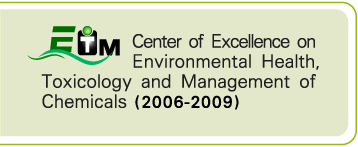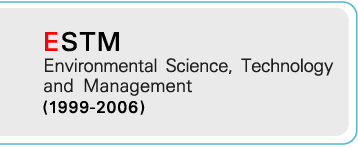| This research work aims at studying the existence of endocrine disruptors (ED) polluted in aqueous natural resources in which affect on living organism in Chiang Mai, northern Thailand. Targeting at using cellular technologies to screen and evaluate the bioactive effects and to quantify the relative spectrum of ED-activities to standard female sex hormone, 17b-estradiol. MCF-7, the human breast cancer cell line, with the back ground of estrogen receptor (ER) positive, was found to response to 17b-estradiol in the biphasic manner, i.e. cellular toxic at specific high concentration and with concentration dependent manner of cellular proliferate-enhancement at lower amount. The cell line was used to detect ED activities from several samples including consumable products and animal farm and hospital effluents. It was found that most of the samples exhibited similar biphasic activities at certain concentrations due to ED content. Biomolecular mechanism of actions were investigated among the related genes with resulting through ER-alpha regulation. This cell line, MCF-7, was then stably transfected by the plasmid constructed reporter gene system to get a new estrogen sensitive reporter cell line, MCF-7-CAT-DsRed. The cell line showed the ability to detect the estrogen responsive activities via chloramphenicol acetyltransferase (CAT) reporter protein and could be identified by ELISA technique. On testing with some of the mentioned samples, this reporter cell line exhibited better expression and with remarkably more respond to lower concentration of ED than the original MCF-7 cells.
แหล่งข้อมูล:
|
 Center of Excellence on Environmental Health and Toxicology (EHT)
Center of Excellence on Environmental Health and Toxicology (EHT)










